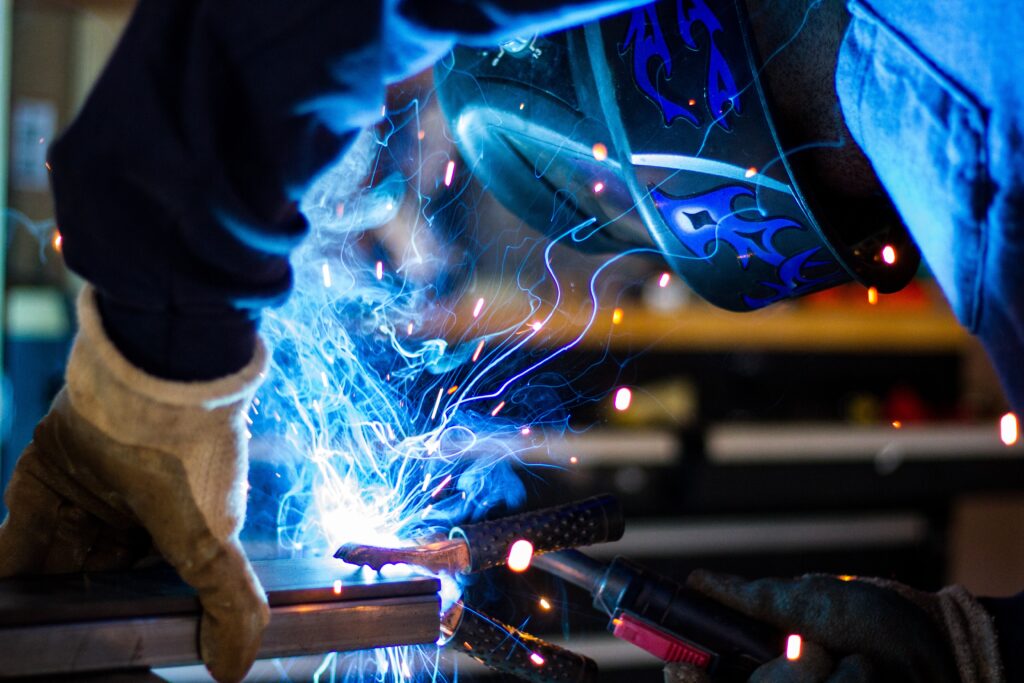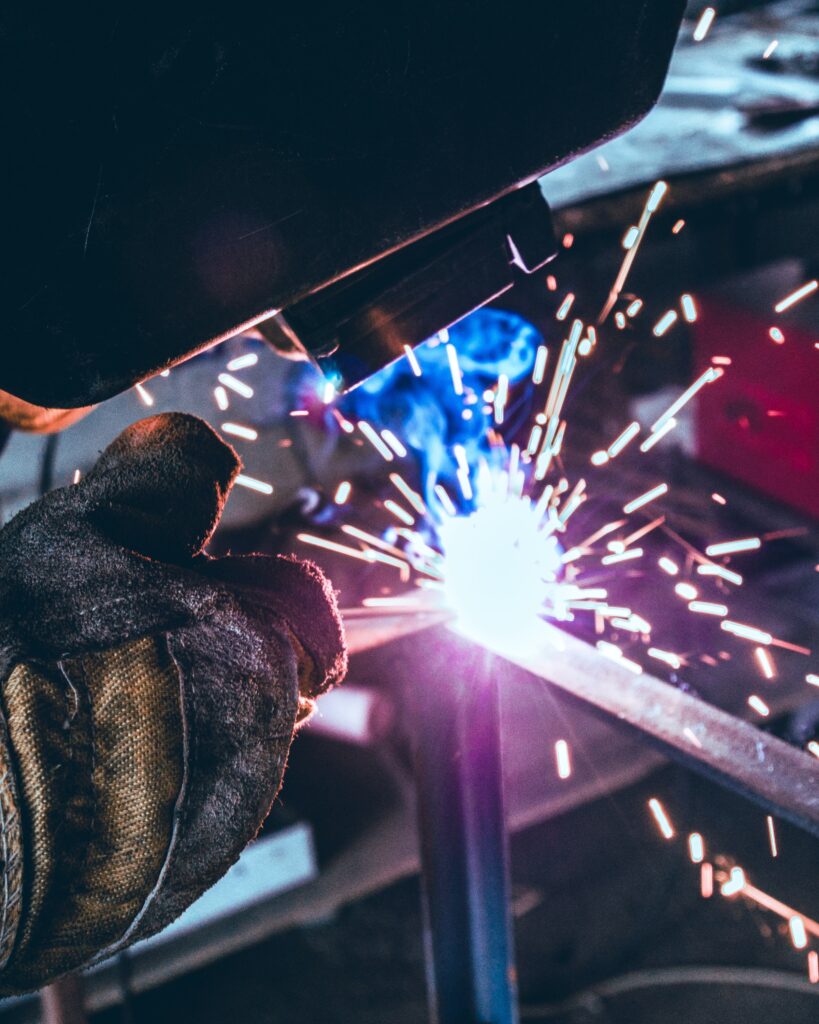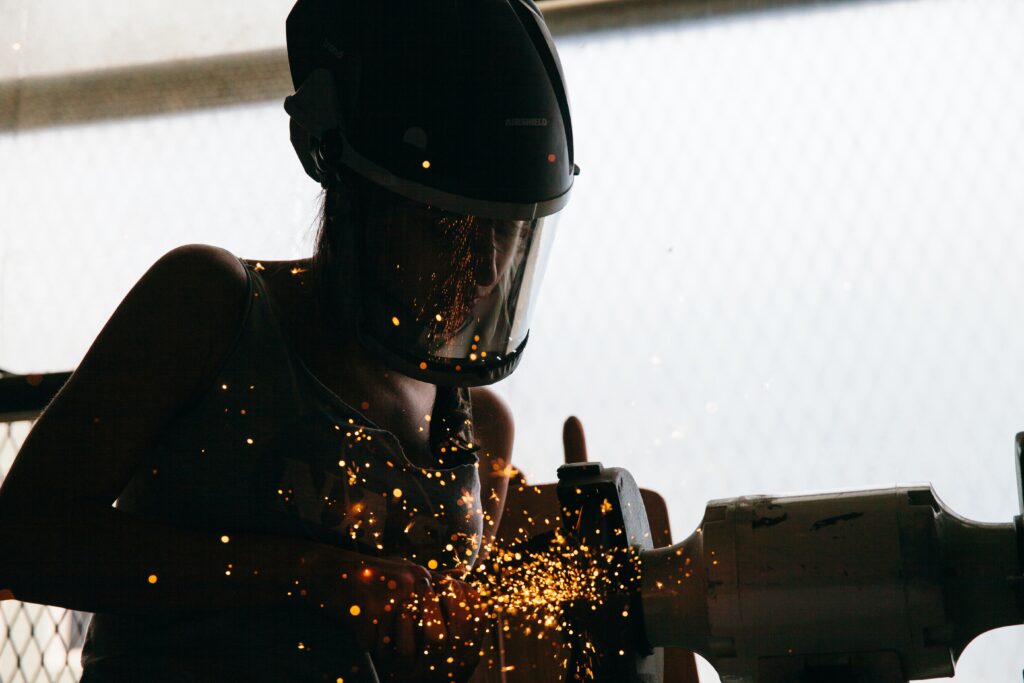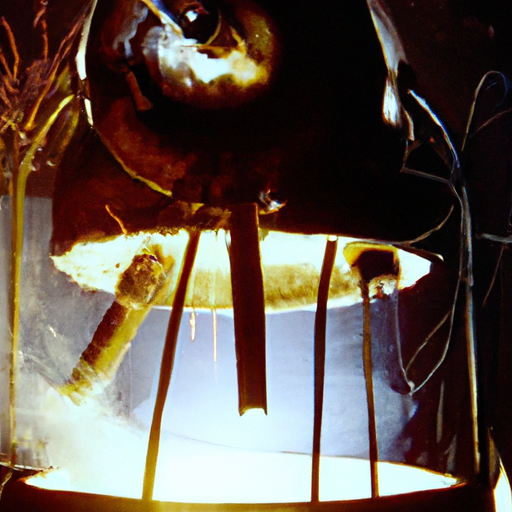Metal welding is a fascinating field that allows diverse materials to be joined together to create a variety of structures. However, have you ever wondered if there are any metals that simply cannot be welded? In this article, we will explore the limits of metal welding and uncover which metals pose challenges in the welding process. From exploring the unique properties of different metals to understanding the importance of choosing the right welding techniques, get ready to discover the secrets behind what metal won’t weld.

Understanding Welding
Definition of welding
Welding is a process that involves joining two or more pieces of metal together by melting the edges and allowing them to fuse. This creates a strong and permanent bond between the metals. Welding is widely used in various industries, including manufacturing, construction, and automotive.
Processes involved in welding
There are different welding processes, each suited for specific applications. Some common welding processes include:
Arc Welding
Arc welding uses an electric current to create an arc between the welding electrode and the base metal. This heat generated by the arc melts the metal, creating a weld. This process is versatile and can be used to weld various types of metals.
Gas Welding
Gas welding involves using a flame produced by burning a fuel gas, such as acetylene, and oxygen. The heat from the flame melts the metal, allowing it to be fused together. Gas welding is commonly used for welding thin sheets of metal.
Resistance Welding
Resistance welding utilizes the heat generated by the resistance to electric current flow in the metal. The metal pieces to be joined are pressed together and an electric current is passed through them, causing the metal interfaces to melt and weld together.
Tools used in welding
To perform welding, several tools and equipment are necessary. These include:
Welding Machine
A welding machine is the primary tool used in welding. It provides the necessary heat and power for the welding process.
Electrode Holder and Welding Cables
These tools are used to connect the welding machine to the metal being welded. The electrode holder holds the welding electrode, which conducts the electric current.
Welding Helmet
A welding helmet is a safety equipment that protects the welder’s eyes and face from flashes, sparks, and harmful UV radiation during the welding process.
Welding Gloves and Protective Clothing
Welding gloves are made of heat-resistant materials to protect the hands from burns. Protective clothing, such as flame-resistant jackets and aprons, shields the welder’s body from sparks and flying debris.
Types of welding
There are various types of welding techniques, each with its own advantages and applications. Some common types of welding include:
MIG Welding
MIG (Metal Inert Gas) welding uses a wire electrode that is fed through a welding gun. An inert gas, such as argon or helium, is used to shield the weld from atmospheric contamination.
TIG Welding
TIG (Tungsten Inert Gas) welding is a precise and high-quality welding process. It uses a non-consumable tungsten electrode and a shielding gas to create the weld.
Stick Welding
Stick welding, also known as Shielded Metal Arc Welding (SMAW), is a versatile and widely used welding technique. It uses a flux-coated electrode that melts and fuses the metal.
Flux-Cored Arc Welding
Flux-Cored Arc Welding (FCAW) is a process similar to MIG welding, but instead of a solid wire electrode, a hollow wire filled with flux is used. The flux creates a shielding gas that protects the weld.
Overview of Metals Used in Welding
Various types of metals
There are numerous types of metals used in welding, ranging from mild steel to exotic alloys. Some common metals used in welding include:
-
Steel and its alloys: Steel is one of the most commonly welded metals due to its strength and versatility. Various steel alloys, such as stainless steel and carbon steel, are also commonly welded.
-
Aluminium: Aluminium is lightweight, corrosion-resistant, and widely used in industries such as aerospace and automotive. It requires specialized welding techniques.
-
Copper: Copper offers excellent electrical conductivity and is often used in electrical and plumbing applications. It can be welded with specific techniques.
-
Nickel: Nickel and nickel alloys are known for their exceptional corrosion resistance and high-temperature strength. They are commonly used in chemical plants and oil refineries.
Commonly welded metals
While numerous metals can be welded, some metals are more commonly welded due to their availability and suitability for welding processes. These metals include:
-
Mild steel: Mild steel is an economical option and widely used in various applications due to its strength and ease of welding.
-
Stainless steel: Stainless steel is resistant to corrosion, making it popular for applications requiring durability and aesthetic appeal.
-
Aluminum alloys: Aluminum alloys are widely used in industries where lightweight and corrosion-resistant materials are required, such as in aerospace and automotive manufacturing.
-
Cast iron: Cast iron is a brittle material that is difficult to weld due to its high carbon content and tendency to crack.
Characteristics of metals suitable for welding
For a metal to be suitable for welding, it must possess certain characteristics. These characteristics include:
-
Conductivity: Metals with high heat and electrical conductivity are easier to weld as they facilitate heat transfer during the welding process.
-
Ductility: Ductility is the ability of a metal to be stretched into thin wires or sheets without breaking. Ductile metals are more forgiving during the welding process.
-
Cleanliness: Metals should be clean and free from contaminants, such as rust or dirt, to achieve proper weld quality.
-
Compatibility: Metals being welded should have similar physical properties to minimize the risk of cracking or distortion.
Criteria for Weldable Metals
Chemical properties
The chemical properties of a metal play a crucial role in its weldability. These include the presence of certain elements that may affect the welding process, such as:
-
Carbon content: High carbon content can lead to brittleness and cracking during welding.
-
Sulfur and phosphorus content: High levels of sulfur and phosphorus can create weld defects, such as porosity and hot cracking.
-
Alloying elements: Different alloying elements, such as chromium or molybdenum, can affect the weldability and properties of the metal.
Physical properties
Physical properties of metals, such as melting point and thermal conductivity, also influence their weldability. Some factors to consider regarding the physical properties are:
-
Melting point: Metals with significantly different melting points may require specialized welding techniques to ensure proper fusion.
-
Thermal conductivity: High thermal conductivity can lead to rapid heat dissipation during welding, making it more challenging to achieve a strong weld.
-
Expansion coefficient: Metals with differing coefficients of thermal expansion may undergo distortion or cracking during cooling after welding.
Mechanical properties
The mechanical properties of metals determine their strength, toughness, and ductility. These properties impact the integrity of the weld joint. Some important mechanical properties to consider include:
-
Tensile strength: The ability of a metal to resist breaking under tension. Weld joints should possess similar strength to the base metal.
-
Toughness: The ability of a metal to absorb energy without fracturing. Weld joints should maintain their toughness to prevent brittle fractures.
-
Ductility: The ability of a metal to be stretched or deformed without breaking. Metals with good ductility are generally easier to weld.
Metals That Can Be Welded
Steel and its alloys
Steel and its various alloys, such as stainless steel and carbon steel, are widely welded metals. Steel is known for its strength, durability, and versatility, making it suitable for various applications. Different welding techniques and filler materials are used depending on the specific type of steel being welded.
Aluminium
Aluminium and its alloys are commonly used in many industries due to their lightweight, corrosion-resistant properties. However, welding aluminium can be challenging due to its high thermal conductivity and susceptibility to distortion. Specialized techniques, such as TIG welding with alternating current, are often employed to weld aluminium effectively.
Copper
Copper is widely utilized in electrical and plumbing applications due to its excellent electrical conductivity and corrosion resistance. Copper can be welded using processes such as gas welding and TIG welding. However, due to substantial thermal conductivity, proper heat management and specific welding techniques are essential to accomplish successful copper welds.
Nickel
Nickel and its alloys are highly resistant to corrosion and high-temperature environments, making them suitable for applications in the chemical and petrochemical industries. Nickel can be welded using processes such as TIG welding and MIG welding. The high-temperature strength of nickel alloys requires careful selection of welding parameters to prevent cracking and distortion.

Reviewing Non-Weldable Metals
Metals typically classified as non-weldable
While many metals can be welded, there are certain metals that are considered non-weldable due to various factors. These metals include:
-
Cast Iron: Cast iron has a high carbon content, making it prone to cracking during welding. The presence of graphite flakes further complicates the welding process.
-
Titanium: Titanium has a high melting point, and its reactivity with oxygen and nitrogen makes it challenging to weld using traditional techniques.
-
Zinc: Zinc has a low boiling point, and its vapors are highly toxic. It is typically not welded due to the health hazards associated with welding zinc.
-
Lead: Lead has a low melting point and poses significant health risks when heated. Welding lead is generally avoided due to safety concerns.
Specific reasons why certain metals are not weldable
The non-weldability of certain metals can be attributed to several factors. These may include:
-
High melting point: Metals with extremely high melting points may require specialized techniques or equipment that are not commonly available.
-
Chemical reactivity: Some metals, such as titanium, react with oxygen or nitrogen in the air during welding, resulting in brittle and porous welds.
-
Toxicity: Metals like zinc and lead release toxic fumes when heated, posing health risks to welders. This makes welding these metals unsafe.
-
Microstructure and composition: Certain metals, like cast iron, have complex microstructures and compositions that make welding difficult and prone to failure.
Possible risks or complications of attempting to weld non-weldable metals
Attempting to weld non-weldable metals can lead to several risks and complications. These may include:
-
Weld defects: Non-weldable metals may result in poor-quality welds, with issues such as porosity, cracking, or insufficient fusion.
-
Weakening of the base metal: Improper welding techniques or parameters can weaken the base metal and compromise its structural integrity.
-
Health hazards: Some non-weldable metals release toxic fumes when heated, posing serious health risks to welders if proper safety measures are not in place.
-
Cost and time inefficiency: Welding non-weldable metals often requires specialized equipment and techniques, which can be costly and time-consuming.
Examples of Non-Weldable Metals
Cast Iron
Cast iron is often categorized as non-weldable due to its high carbon content and the presence of graphite flakes. The carbon content leads to brittleness and makes cast iron prone to cracking during the welding process. Specialized techniques, such as preheating and the use of specialized electrodes, may be employed to achieve successful cast iron welds.
Titanium
Titanium has a high melting point and is highly reactive with oxygen and nitrogen in the air. Welding titanium requires the use of inert shielding gases and specialized equipment to prevent contamination and ensure proper weld quality. The complexity and expense of welding titanium make it a challenging metal to weld.
Zinc
Zinc has a low boiling point, and its vapors are highly toxic. Welding zinc can release harmful fumes, posing serious health risks to welders. Additionally, zinc is a relatively soft metal, making it challenging to achieve a strong and durable weld. As a result, welding zinc is generally avoided for safety reasons.
Lead
Lead has a low melting point and is highly toxic when heated. Welding lead poses significant health hazards, and the associated fumes can lead to lead poisoning. Due to its toxicity and safety concerns, welding lead is not recommended.

Challenges with Welding Certain Metals
Issues with high thermal conductivity
Metals with high thermal conductivity, such as aluminum, pose challenges during welding. The high thermal conductivity causes rapid heat dissipation, making it difficult to achieve sufficient heat for proper fusion. Specialized techniques, such as preheating or using pulsed welding, may be necessary to overcome this challenge.
Problems associated with metal’s high-sulphur content
Metals with high sulfur content, such as some carbon steels, can lead to weld defects such as cracking and porosity. The sulfur in the metal reacts with the molten weld pool, creating voids and weakening the weld joint. Proper pre-welding preparations and selection of compatible filler materials can mitigate these issues.
Porosity and cracking with specific metals
Certain metals, like aluminum and cast iron, are prone to porosity and cracking during welding. Porosity refers to the presence of gas pockets within the weld, while cracking occurs due to excessive cooling rates or high carbon content. Controlling the welding parameters, preheating, and using appropriate filler metals can help minimize these issues.
Alternative Methods for Joining Non-Weldable Metals
Brazing and soldering
Brazing and soldering are alternative methods for joining non-weldable metals. These processes involve heating the base metals and introducing a filler material that melts between them, forming a bond when cooled. Brazing uses higher temperatures and stronger filler metals, while soldering uses lower temperatures and softer filler materials.
Mechanical fasteners
When welding is not possible, mechanical fasteners such as bolts, screws, and nuts can be used to join non-weldable metals. These fasteners provide a secure and removable connection, allowing for disassembly and reassembly if needed.
Adhesive bonding
Adhesive bonding involves using specialized adhesives to join non-weldable metals. The adhesive forms a strong bond between the surfaces, creating a durable connection. Adhesive bonding is often used in industries where welding is not feasible or desirable, such as in the aerospace industry.

Safety Measures When Welding
Understanding welding safety
Welding can pose various health and safety hazards if proper precautions are not taken. Welders should be aware of the potential risks associated with welding, such as exposure to harmful fumes, intense heat, and arc radiation. Understanding welding safety practices and following safety guidelines is essential for protecting oneself and others.
Personal protective equipment for welding
To ensure personal safety during welding, welders should use appropriate personal protective equipment (PPE). Some essential PPE for welding includes:
-
Welding helmet: A welding helmet with a suitable lens shade protects the face and eyes from intense light and harmful UV radiation.
-
Welding gloves: Heat-resistant gloves provide protection against burns caused by hot metal and sparks.
-
Welding apron or jacket: Flame-resistant aprons or jackets shield the body from sparks and potential burns.
-
Welding boots: Steel-toed boots protect the feet from falling objects and potential hazards in the welding environment.
Procedures for safe welding practices
Adhering to proper welding procedures is crucial for maintaining safety during the welding process. Some key procedures for safe welding practices include:
-
Adequate ventilation: Welding produces hazardous fumes and gases. Ensuring a well-ventilated workspace reduces the risk of respiratory issues.
-
Fire prevention: Clearing the work area of flammable materials and having fire extinguishing equipment readily available minimizes the risk of fires.
-
Proper grounding: Good electrical grounding prevents electric shock hazards and reduces the risk of electrical fires.
-
Welding in correct positions: Adopting proper body positions and using suitable supports reduces fatigue and minimizes the risk of accidents or injuries.
Conclusion: Weldability of Different Metals
Significance of understanding weldability
Understanding the weldability of different metals is of utmost importance for achieving successful welding results. It allows welders to select the appropriate welding techniques, filler materials, and process parameters, ensuring strong and reliable welds.
Impact of non-weldability on manufacturing and construction
The non-weldability of certain metals impacts various industries, particularly manufacturing and construction. Inability to weld specific metals can lead to limitations in design, fabrication, and repair processes. This may result in increased costs, decreased efficiency, and compromised structural integrity.
Ways to overcome challenges with non-weldable metals
When faced with non-weldable metals, alternative joining methods such as brazing, soldering, mechanical fasteners, or adhesive bonding can be employed. These methods provide viable solutions for joining metals that cannot be directly welded. However, it is essential to consider the specific requirements and limitations of each non-weldable metal.
In conclusion, welding is a versatile and widely used process for joining metals. Understanding the weldability of different metals, the associated challenges, and alternative joining methods allows for informed decision-making when it comes to selecting appropriate materials and processes for successful welding projects. By considering the chemical, physical, and mechanical properties of metals, as well as the safety measures and alternatives available, welders can achieve strong and durable welds while ensuring their own safety and the integrity of the final product.

